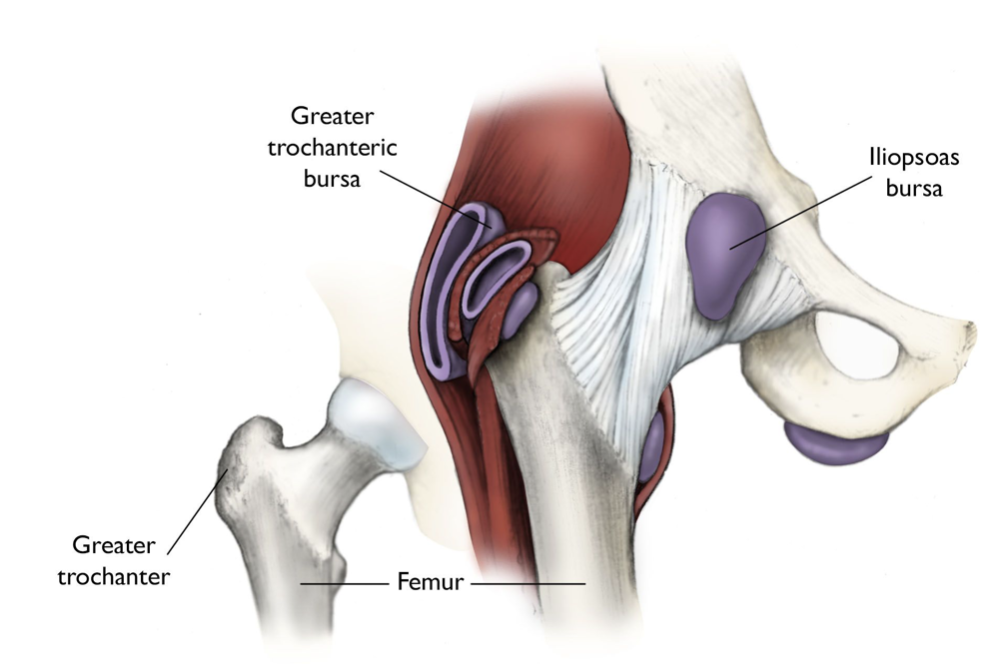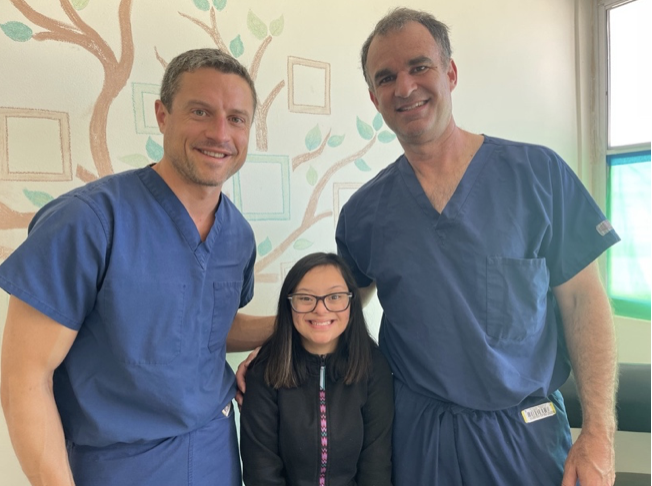Trochanteric Bursitis of the Hip
A bursa is a small, fluid-filled sac which acts as a gliding surface, reducing friction in the movement of the larger joints in the body. They may act singly or in groups (bursae) to help your bones, tendons, muscles, and skin slid easily across each other as you move and bend.
Bursitis is irritation or inflammation of the bursa. Trochanteric bursitis (greater trochanteric pain syndrome or GTPS) is inflammation of the bursa that lies between bone and muscle in the hip. Hip bursitis can affect anyone, but women, middle-aged, and elderly people are more likely to develop it. In most cases, bursitis will go away within a few weeks if treated properly, but recurring flare-ups are common.

Image credit: AAOS, OrthoInfo.aaos.org
Causes
· Trauma from a fall or accident
· Repetitive stress from overuse
· Osteoarthritis/Rheumatoid Arthritis of the foot, knee, or hip
· Hip and trunk muscle weakness
· Obesity
· Foot pain from bunions, plantar fasciitis, callus, or Achilles tendon pain
· Previous hip or leg surgery
· Poor muscle flexibility or imbalance putting stress on hip muscles
· Calcium deposits (bone spurs)
· Movement and walking abnormalities
Symptoms
· Hip pain that is intense to begin with, but may subside to an ache
· Difficulty walking, biking
· Difficulty walking up or down stairs
· Joint stiffness
· Swelling
· Warmth in the hip
· Tender to the touch
· Catching, clicking sensation
You may notice more pain when:
· Getting out of bed
· Getting out of a chair
· Sitting for extended periods
· Walking up or down stairs
· Lying/Sleeping on the affected side
Non-Surgical Treatments
· Rest
· Ice
· Non-steroidal anti-inflammatory Drugs (NSAIDs)
· Avoid or modify activities that make pain worse
· Assistive devices (cane, crutches)
· Corticosteroid injection
· Needle aspiration (draining fluid from the bursa)
· Physical therapy
· Weight loss
· Comfortable, low-heeled, well-cushioned shoes
Surgical Treatment
If the injury isn’t responding to conservative treatment, your doctor may recommend surgery to repair or remove damaged tissue.



